Transportation in Animals and Plants Class 7 Notes Science Chapter 7
| Table of contents |

|
| Transport of Substances in Animals |

|
| Transport of Substances in Plants |

|
| Substances that Need to be Transported |

|
| Transport in Humans |

|
| Transport in Plants |

|
| Excretory System |

|
| Key Words |

|
In the previous chapter, we learned about respiration in living organisms. Transport of substances is equally important for the proper functioning of different organ systems in a living organism.
Transport of Substances in Animals
The heart plays a crucial role in the transportation of oxygen to different parts of the human body. Blood is the main transport medium in animals, which carries nutrients, oxygen, and waste products. Blood vessels, including arteries, veins, and capillaries, help in the transportation of blood to and from different parts of the body. The process of circulation ensures that the required nutrients and oxygen reach all the cells, and waste products are removed efficiently.
Transport of Substances in Plants
Plants have a specialized transport system called the vascular system, which consists of xylem and phloem. Xylem helps in the transportation of water and minerals from the roots to the leaves. Phloem helps in the transportation of food materials, including glucose, from the leaves to the rest of the plant body. The process of transpiration helps in the upward movement of water in plants, and the flow of nutrients in the phloem is called translocation.
Substances that Need to be Transported
- Food: All living organisms need food for energy, growth, and development. In animals, food is transported through the bloodstream, while in plants, it is transported through phloem.
- Water and Minerals: Water and minerals are required for the proper functioning of the body of an organism. In animals, water is transported through the bloodstream, while in plants, it is transported through xylem.
- Waste Products: Waste products generated as a result of life activities need to be removed from the body. In animals, waste products are transported through the bloodstream and excreted through the kidneys and lungs. In plants, waste products are transported through phloem and excreted through the leaves.
- Oxygen: Oxygen is required for the oxidation process in the cells and the body. In animals, oxygen is transported through the bloodstream, while in plants, it is absorbed through the stomata and transported through the xylem.
Activity:
Aim: To understand the transportation of water in plants.
Materials needed: A celery stalk, red food coloring, water, a glass.
Method:
Fill a glass with water and add a few drops of red food coloring.
Cut the bottom of the celery stalk and place it in the glass.
Observe the celery stalk for a few hours.
Observation:
After a few hours, the celery stalk will turn red. This is because water is transported from the glass to the celery stalk, carrying the red food coloring with it.
Conclusion:
Water is transported in plants through the xylem, which is a network of tubes that runs from the roots to the leaves. This activity demonstrates how water is transported in plants and how substances can move through a plant's transportation system.
Conclusion:
Transportation is an essential process in animals and plants, allowing them to maintain their vital functions. Different types of substances are transported, including food, water, minerals, waste products, and oxygen. By understanding how transportation works in living organisms, we can better understand the functions of different organs and systems.
Transport in Humans
Circulatory System
Components: blood, blood vessels (arteries, veins, capillaries), and heart
Blood: fluid that carries nutrients, gases, water, and waste products

- Components: red blood cells (RBCs), white blood cells (WBCs), and blood platelets
- Function of RBCs: transport oxygen to all parts of the body
- Function of WBCs: protect the body against disease-causing microorganisms
- Function of blood platelets: stop bleeding after injury
Heart: four-chambered muscular organ that pumps blood throughout the body
- Heartbeats: rhythmic contractions and relaxations of heart muscles
- Pulse: throbbing sensation caused by artery close to the skin surface
Blood vessels: tubes through which blood flows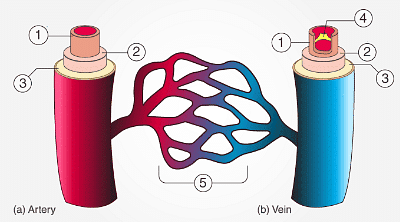
- Arteries: carry blood away from the heart, have thick walls, and no valves
- Veins: carry blood to the heart, have thinner walls, and have valves
- Capillaries: thin-walled vessels that allow for diffusion of gases and substances
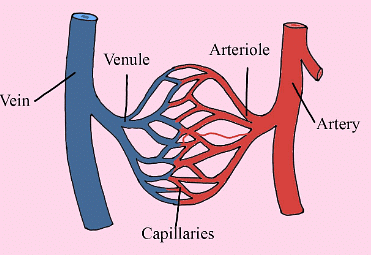
Discovery of Blood Groups
Karl Landsteiner discovered major blood groups in humans. Awarded Nobel prize in Physiology or Medicine in 1930.
Transport in Plants
Vascular System
Components: xylem and phloem
Xylem: transports water and minerals from roots to leaves
- Tracheids and vessel elements: cells that form xylem tissue
- Transpiration: process by which water is transported through xylem
Phloem: transports organic nutrients from leaves to other parts of the plant
- Sieve tube elements and companion cells: cells that form phloem tissue
- Translocation: process by which nutrients are transported through phloem
Differences between Xylem and Phloem
- Xylem: unidirectional flow, transports water and minerals, and has tracheids and vessel elements
- Phloem: bidirectional flow, transports organic nutrients, and has sieve tube elements and companion cells
Factors affecting Transport in Plants
- Temperature: affects the rate of transpiration and translocation
- Light: affects the rate of photosynthesis, which affects the production of organic nutrients
- Water: availability of water affects the rate of transpiration and the movement of nutrients through phloem
Adaptations for Transport in Plants
- Roots: absorb water and minerals from soil.
- Leaves: photosynthesis produces organic nutrients that are transported through phloem.
- Stem: supports the plant and transports water and nutrients between roots and leaves.
Transport in Plants
Xylem tissue acts as a pipeline to transport water and minerals from roots to leaves through a process called transpiration. Phloem tissue carries the prepared food from leaves to different parts of the plant through translocation. Transpiration is the process of water loss from plants through stomata, which also allows for gas exchange and cooling.
- Factors Affecting Transpiration
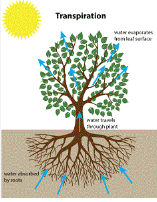 The rate of transpiration is influenced by the condition of air, amount of moisture in air, number of stomata, and size of leaves. Transpiration is important for plants as it facilitates gas exchange, provides a cooling effect, and aids in mineral and water transport.
The rate of transpiration is influenced by the condition of air, amount of moisture in air, number of stomata, and size of leaves. Transpiration is important for plants as it facilitates gas exchange, provides a cooling effect, and aids in mineral and water transport. - Transport in Animals
The circulatory system in animals consists of the heart, blood vessels, and blood. The heart pumps blood to all parts of the body, delivering nutrients and oxygen and removing waste products. Blood vessels are divided into arteries, veins, and capillaries, each with specific functions. - Comparison of Plant and Animal Transport Systems
Both plant and animal transport systems involve the movement of substances to different parts of the body. The plant transport system is passive, while the animal transport system is active. The circulatory system in animals is more complex than the transport system in plants.
Activity:
Aim: To demonstrate the process of transpiration in plants.
Materials needed:
- A potted plant
- A plastic bag
- A rubber band
Method:
Cover a leaf of the potted plant with a plastic bag and secure it with a rubber band.
Leave the plant for a few hours.
Remove the plastic bag and observe the moisture inside.
Observation:
The moisture inside the plastic bag indicates the process of transpiration in plants.
Conclusion:
Transpiration is a crucial process for plants as it helps in the transport of water and minerals from the roots to the leaves.
Excretory System
Living organisms constantly generate waste products as a result of various chemical reactions that occur inside their bodies. These wastes need to be removed to maintain a healthy body. The process of removal of wastes is called excretion, and the organ system responsible for this process is called the excretory system.
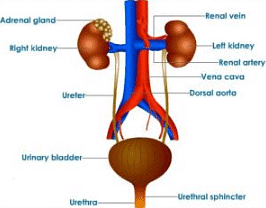
- Excretion in Animals
Animal wastes mainly include carbon dioxide, wastes of the digestive system, and nitrogenous wastes such as urea and uric acid. Different animals have different methods of excretion. Some animals like Amoebo excrete all kinds of body wastes by direct diffusion through the cell membranes, while others like earthworms, insects, and leeches have tubular structures to help get rid of body wastes. - Excretion in Humans
Humans excrete waste products in several ways. Carbon dioxide formed during respiration is exhaled out of the body. Our skin acts as an excretory organ and gets rid of a small quantity of urea, salts, and water through sweat. The kidneys, a pair of reddish bean-shaped organs, remove nitrogenous wastes such as urea and uric acid from the blood. The functional unit of the kidney called nephrons filters waste substances dissolved in water and removes them as urine.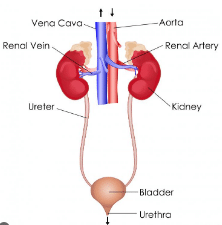
- Dialysis
If both the kidneys are damaged, a person can survive with the help of regular dialysis or a kidney transplant. Dialysis is a method of removing toxic substances from the blood with the help of a machine when the kidneys are unable to do so. Blood from an artery of the arm is led through the dialysis machine, where urea and excess salts are removed. In a kidney transplant, at least one of the diseased kidneys is replaced with a healthy kidney from a donor. - Excretion in Plants
Plants excrete carbon dioxide formed as a result of respiration, excess water through stomata, excessive salts, and toxic wastes in the form of gums, resins, and latex. These secretions are used to manufacture paints, varnishes, rubber, and adhesives.
Activity:
Aim: To demonstrate the movement of water through a plant.
Materials needed: A plant, food coloring, water, and a clear glass or jar.
Method:
Add a few drops of food coloring to a glass of water.
Cut the stem of a plant at a 45-degree angle and place it in the glass of colored water.
Leave the plant in the water for several hours.
Observation: Over time, the plant's stem and leaves will become colored, demonstrating the movement of water through the plant.
Conclusion: This activity shows that water is transported from the roots to other parts of the plant through the xylem. In conclusion, the transport of substances is an essential process in both animals and plants. In animals, the circulatory, respiratory, and excretory systems work together to ensure nutrients and waste products are transported throughout the body. In plants, the xylem and phloem are responsible for the transport of water, minerals, and nutrients.
Key Words
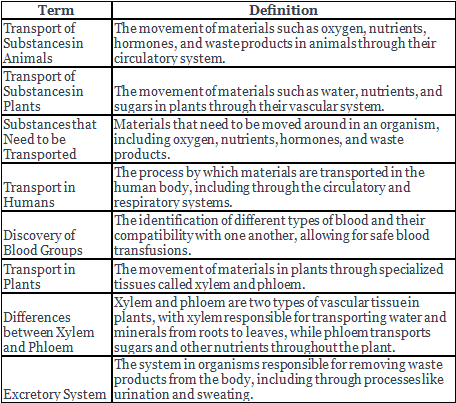
|
139 videos|151 docs|18 tests
|




















